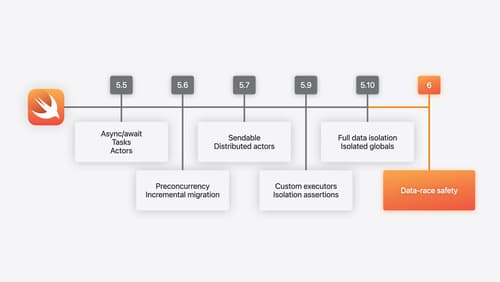how can i move to swift testing
Asked on 2024-08-02
6 searches
To move to Swift Testing, you can follow these steps:
-
Add a Test Bundle Target: If you've never written tests for your app before, start by adding a test bundle target to your project. In Xcode, choose
File > New > Target, then search forUnit Testing Bundlein the test section. Swift Testing is now the default choice of testing system for this template in Xcode 16. Choose a name for your new target and click finish. -
Write Your First Test: Once you have a test target, you can write your first test. In Swift Testing, you use the
@Testattribute to denote test functions explicitly. This is different from XCTest, where test methods are identified by their names starting withtest. -
Migrate Existing XCTest Tests: If you have existing XCTest tests, you can migrate them to Swift Testing. Swift Testing has some similarities to XCTest but also important differences. For example, Swift Testing uses the
@Testattribute instead of naming conventions to identify test functions. It also supports traits for specifying information per test or suite and takes a different approach to parallelization using Swift concurrency. -
Use Parameterized Tests: Swift Testing allows you to consolidate multiple similar test methods into one parameterized test. This can help reduce redundancy and make your tests more maintainable.
-
Organize Tests with Tags and Suites: Swift Testing includes a flexible tagging system to help you organize your tests. You can use tags to selectively run tests across your test suite, such as tests that use a certain module or run on a specific device.
-
Run Tests in Parallel: Swift Testing takes full advantage of Swift's concurrency features, allowing you to run tests in parallel. This can reduce the time it takes to run your tests and help identify dependencies between them.
-
Use Swift Testing Tools: Swift Testing is integrated into major tools and IDEs in the Swift ecosystem, including Swift Package Manager on the command line, Xcode 16, and Visual Studio Code with recent versions of the Swift extension.
For more detailed guidance, you can refer to the session Meet Swift Testing which covers how Swift Testing and XCTest relate to one another and provides tips on migrating your tests.
Relevant Sessions
These sessions provide comprehensive information on Swift Testing, including its features, how to migrate from XCTest, and how to leverage its full potential in your testing workflow.

Platforms State of the Union
Discover the newest advancements on Apple platforms.

Meet Swift Testing
Introducing Swift Testing: a new package for testing your code using Swift. Explore the building blocks of its powerful new API, discover how it can be applied in common testing workflows, and learn how it relates to XCTest and open source Swift.

What’s new in Swift
Join us for an update on Swift. We’ll briefly go through a history of Swift over the past decade, and show you how the community has grown through workgroups, expanded the package ecosystem, and increased platform support. We’ll introduce you to a new language mode that achieves data-race safety by default, and a language subset that lets you run Swift on highly constrained systems. We’ll also explore some language updates including noncopyable types, typed throws, and improved C++ interoperability.
